Do you have a question about the Vertex Standard FT-950 and is the answer not in the manual?
Lists all included and optional accessories for the FT-950 transceiver.
Covers power connection, front feet, tuning dial, and microprocessor reset procedures.
Guidance on coaxial cable quality and establishing an effective ground system.
Connecting microphones, headphones, keyers, linear amplifiers, and other accessories.
Controls for basic operation, CW, VOX, MONI, PROC, and SPOT functions.
MIC GAIN, SPEED, METER, and filter controls for signal adjustment.
VFO, memory, band selection, and data transfer controls.
ATT, IPO, R.FLT, NB switches for RF signal management and interference suppression.
Indicators for PROC, MONI, KEYER, BK-IN, NAR, S/PO, and signal strength.
Meter functions, TUNER, HI-SWR, MIC EQ, REC, PLAY, and Block Diagram elements.
Displays for frequency, operating mode, tuning offset, and memory status.
ANT 1/2 Jacks and DC IN Jack for connecting antennas and power.
GND, µ-TUNE, ROT, LINEAR, TUNER, RTTY/PKT, PTT, REC jacks for accessories and data.
REM, EXT SPKR, KEY, µ-TUNE, DMU, CAT, PMG-SW for remote control and computer interface.
Using RX/TX CLAR and CLAR/VFO-B knob for frequency offset and tuning.
Using VFO-B, and configuring custom band selections with the My Bands feature.
Band stack VFOs and programming the Custom Switch [C.S] button.
Controlling antenna rotators and advanced frequency entry techniques.
RF stages, IPO, ATT, µ-Tune, and IF roofing filters for signal reception.
CONTOUR, IF SHIFT, IF WIDTH, IF NOTCH, DNF, DNR for signal processing.
AGC, RF Gain, and Noise Blanker for optimizing receiver performance.
Selecting band and mode, adjusting frequency, and using PTT for transmission.
Adjusting MIC GAIN, setting TX power, and adjusting AM carrier power.
How to operate the ATU, its memory function, and impedance matching range.
Selecting audio passband for SSB transmission to adjust fidelity or talk power.
Precise control over low, mid, and treble ranges of voice waveform.
Recording, checking, and transmitting voice messages using the Voice Memory Unit.
Automatic voice-activated switching (VOX) and transmit monitoring.
Flexible split operation using VFO-A and VFO-B frequency registers.
Setting a one-touch offset for Quick Split feature.
Connecting keys, basic CW operation, and keyer setup.
Break-in modes, sidetone, electronic keyer functions, and weight settings.
Keyer modes, spotting, reverse, delay, pitch, and contest memory features.
Basic FM operation, microphone gain, and repeater setup procedures.
Using tone squelch and managing memory channels.
Storing and recalling settings into five quick access memories.
Storing, recalling, checking, and erasing standard memory channels.
Tuning off memory channels and organizing memories into groups.
Scanning VFO frequencies and programmed memory channels for signals.
Basic setup procedures for packet and data modes.
Configuration steps for RTTY communication.
Navigating and adjusting transceiver settings via the menu system.
Restoring all menu settings to factory defaults.
Adjusting display color, brightness, and bar indicator parameters.
Configuring meter peak hold times and rotator indicator settings.
Setting audio output and input levels for the optional Voice Memory Unit.
Configuring beacon intervals, contest number formats, and voice memory audio levels.
Setting tuning speeds for dial/knobs and configuring µ-TUNE modes.
Configuring scanner resume behavior and microphone scanning access.
Setting center frequencies for low, mid, and high ranges of the parametric microphone equalizer.
Setting compression level, TX power, and VOX input source.
Instructions for installing the RF µTuning Kit.
Lists all included and optional accessories for the FT-950 transceiver.
Covers power connection, front feet, tuning dial, and microprocessor reset procedures.
Guidance on coaxial cable quality and establishing an effective ground system.
Connecting microphones, headphones, keyers, linear amplifiers, and other accessories.
Controls for basic operation, CW, VOX, MONI, PROC, and SPOT functions.
MIC GAIN, SPEED, METER, and filter controls for signal adjustment.
VFO, memory, band selection, and data transfer controls.
ATT, IPO, R.FLT, NB switches for RF signal management and interference suppression.
Indicators for PROC, MONI, KEYER, BK-IN, NAR, S/PO, and signal strength.
Meter functions, TUNER, HI-SWR, MIC EQ, REC, PLAY, and Block Diagram elements.
Displays for frequency, operating mode, tuning offset, and memory status.
ANT 1/2 Jacks and DC IN Jack for connecting antennas and power.
GND, µ-TUNE, ROT, LINEAR, TUNER, RTTY/PKT, PTT, REC jacks for accessories and data.
REM, EXT SPKR, KEY, µ-TUNE, DMU, CAT, PMG-SW for remote control and computer interface.
Using RX/TX CLAR and CLAR/VFO-B knob for frequency offset and tuning.
Using VFO-B, and configuring custom band selections with the My Bands feature.
Band stack VFOs and programming the Custom Switch [C.S] button.
Controlling antenna rotators and advanced frequency entry techniques.
RF stages, IPO, ATT, µ-Tune, and IF roofing filters for signal reception.
CONTOUR, IF SHIFT, IF WIDTH, IF NOTCH, DNF, DNR for signal processing.
AGC, RF Gain, and Noise Blanker for optimizing receiver performance.
Selecting band and mode, adjusting frequency, and using PTT for transmission.
Adjusting MIC GAIN, setting TX power, and adjusting AM carrier power.
How to operate the ATU, its memory function, and impedance matching range.
Selecting audio passband for SSB transmission to adjust fidelity or talk power.
Precise control over low, mid, and treble ranges of voice waveform.
Recording, checking, and transmitting voice messages using the Voice Memory Unit.
Automatic voice-activated switching (VOX) and transmit monitoring.
Flexible split operation using VFO-A and VFO-B frequency registers.
Setting a one-touch offset for Quick Split feature.
Connecting keys, basic CW operation, and keyer setup.
Break-in modes, sidetone, electronic keyer functions, and weight settings.
Keyer modes, spotting, reverse, delay, pitch, and contest memory features.
Basic FM operation, microphone gain, and repeater setup procedures.
Using tone squelch and managing memory channels.
Storing and recalling settings into five quick access memories.
Storing, recalling, checking, and erasing standard memory channels.
Tuning off memory channels and organizing memories into groups.
Scanning VFO frequencies and programmed memory channels for signals.
Basic setup procedures for packet and data modes.
Configuration steps for RTTY communication.
Navigating and adjusting transceiver settings via the menu system.
Restoring all menu settings to factory defaults.
Adjusting display color, brightness, and bar indicator parameters.
Configuring meter peak hold times and rotator indicator settings.
Setting audio output and input levels for the optional Voice Memory Unit.
Configuring beacon intervals, contest number formats, and voice memory audio levels.
Setting tuning speeds for dial/knobs and configuring µ-TUNE modes.
Configuring scanner resume behavior and microphone scanning access.
Setting center frequencies for low, mid, and high ranges of the parametric microphone equalizer.
Setting compression level, TX power, and VOX input source.
Instructions for installing the RF µTuning Kit.
| Antenna Impedance | 50 Ohms |
|---|---|
| Type | HF/50MHz Transceiver |
| Frequency Range | 1.8 - 54 MHz |
| Mode | SSB, CW, AM, FM |
| Voltage | 13.8V DC |
| Receiver Type | Superheterodyne |
| Power Supply | 13.8V DC |
| Current Consumption | 22A (TX), 1.8A (RX) |



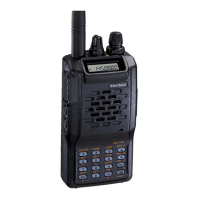

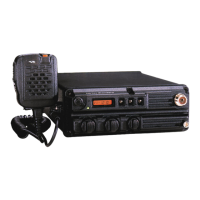

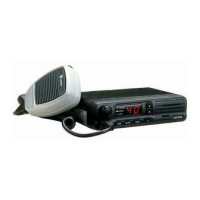


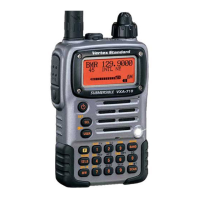
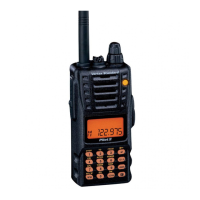
